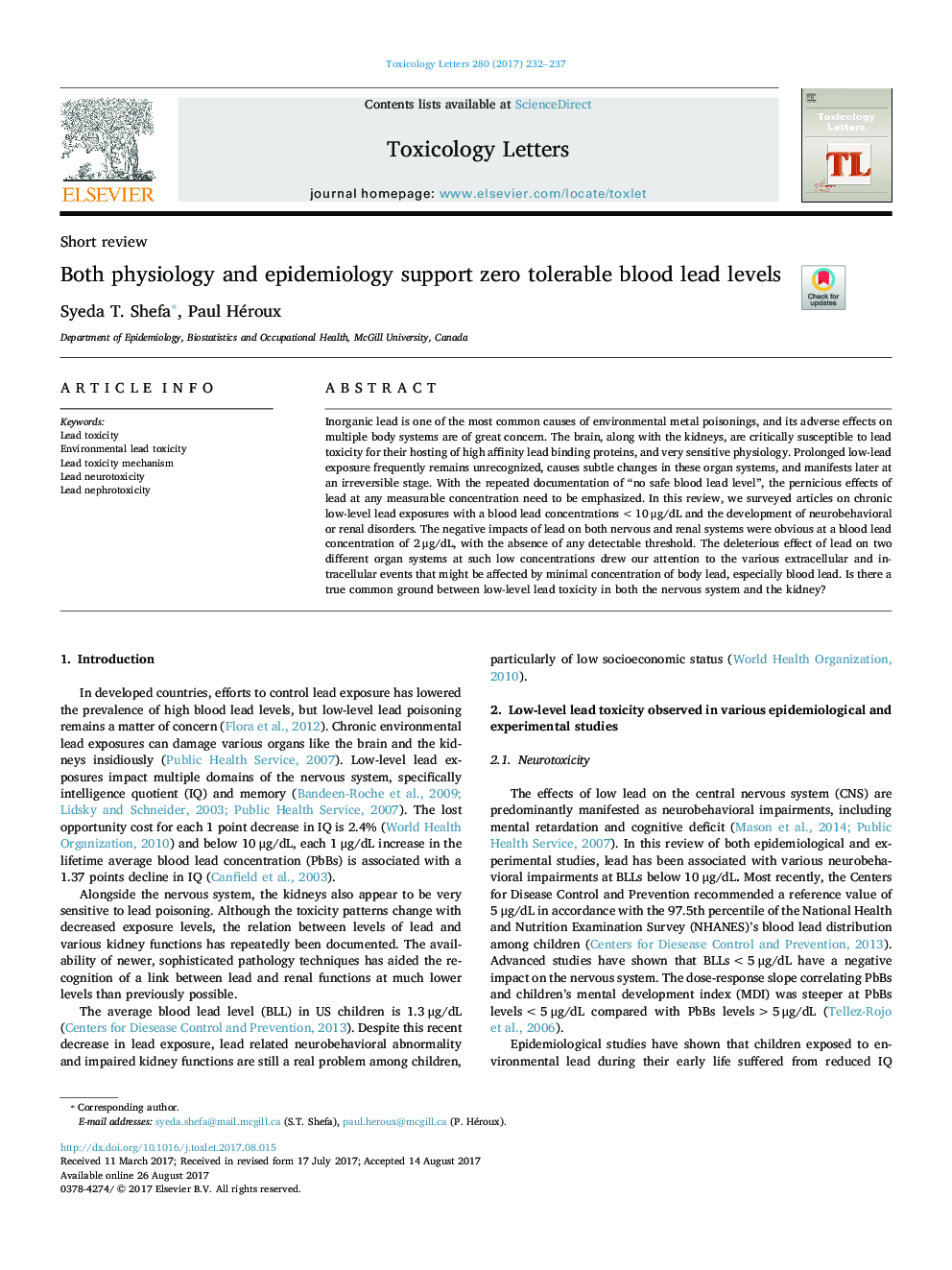| Article ID | Journal | Published Year | Pages | File Type |
|---|---|---|---|---|
| 5562041 | Toxicology Letters | 2017 | 6 Pages |
Abstract
Inorganic lead is one of the most common causes of environmental metal poisonings, and its adverse effects on multiple body systems are of great concern. The brain, along with the kidneys, are critically susceptible to lead toxicity for their hosting of high affinity lead binding proteins, and very sensitive physiology. Prolonged low-lead exposure frequently remains unrecognized, causes subtle changes in these organ systems, and manifests later at an irreversible stage. With the repeated documentation of “no safe blood lead level”, the pernicious effects of lead at any measurable concentration need to be emphasized. In this review, we surveyed articles on chronic low-level lead exposures with a blood lead concentrations <10 μg/dL and the development of neurobehavioral or renal disorders. The negative impacts of lead on both nervous and renal systems were obvious at a blood lead concentration of 2 μg/dL, with the absence of any detectable threshold. The deleterious effect of lead on two different organ systems at such low concentrations drew our attention to the various extracellular and intracellular events that might be affected by minimal concentration of body lead, especially blood lead. Is there a true common ground between low-level lead toxicity in both the nervous system and the kidney?
Keywords
Related Topics
Life Sciences
Environmental Science
Health, Toxicology and Mutagenesis
Authors
Syeda T. Shefa, Paul Héroux,
